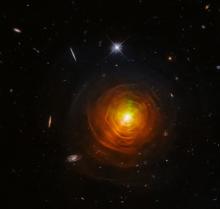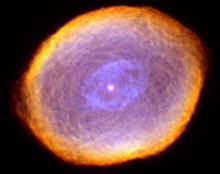Listen to today's episode of StarDate on the web the same day it airs in high-quality streaming audio without any extra ads or announcements. Choose a $8 one-month pass, or listen every day for a year for just $30.
You are here
Life of the Sun
With winter approaching, the Sun can seem small and remote for those at far-northern latitudes. Its feeble light doesn’t do much to warm up the shorter days.
In the distant future, though, that won’t be a problem. The Sun will be much brighter than it is now, so it’ll keep Earth toasty warm all the time. In fact, within a billion years or so, the Sun will get so warm that it’ll boil away Earth’s oceans and air, turning our planet into a cosmic cinder.
The Sun is constantly evolving. It’s “fusing” the hydrogen in its core to make helium. That process converts about four million tons of matter to energy every second, which is what makes the Sun shine.
As more hydrogen is fused to make helium, the core gets smaller and hotter. Radiation from the hotter core pushes on the Sun’s outer layers, causing them to puff up, making our star even brighter. Astronomers estimate that it’s about 30 percent brighter today than when it was born four and a half billion years ago. And every hundred million years, it gets another one percent brighter still. So in a billion years, Earth will get so much solar energy that it won’t be habitable.
In about five billion years, the Sun will enter the next phase of life. It’ll puff up to giant proportions. Then it’ll start burning the helium in its core to make carbon and oxygen, and get bigger still. Finally, it will expel its outer layers, leaving only its hot but dead core, shining feebly through the cosmic night.
Script by Damond Benningfield






